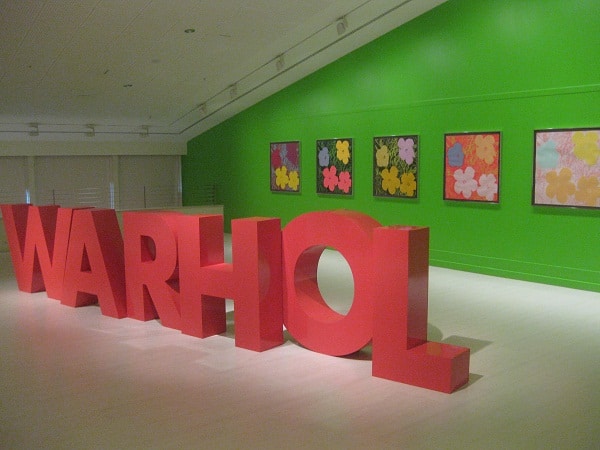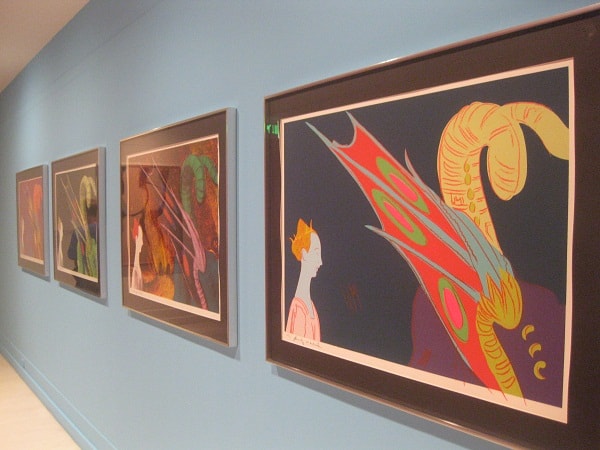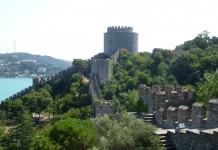Over the past year, the Pera Museum has been featuring art from some of the twentieth century’s most well-known artists. After featuring a diverse collection from Pablo Picasso earlier this year, they’re now featuring work from perhaps the most famous artist since Picasso, Andy Warhol. Image and its meaning were the most important fixtures in Warhol’s work. He liked to play around with iconic images in American culture and mythology, a passion that is reflected in “Andy Warhol: Pop Art For Everyone,” running until Sunday 20 July.
Pop Art has been interpreted as meaning popular art or, more precisely, art for mass audiences depicting popular culture. Many artists such as Andy Warhol and Roy Lichtenstein incorporated aspects of popular post-WWII American culture such as consumer goods, Hollywood and comics into their artistic creations. Andy Warhol’s interest in and unique interpretation of American myth-making and identity form a significant part of the exhibition on display.
The first thing that came to my mind when I entered the exhibit, which begins on the top floor of the Pera, was how the bright Day-Glo colors that spelled out “Warhol” coordinated with the walls painted bright green — a reflection of the art mounted on them. “Andy Warhol: Pop Art for Everyone,” which spreads out over the upper two floors of the museum, features a number of his later works, although the iconic “Campbell’s Soup” from the 1970s is also featured.

Many critics have debated what Warhol was getting at with his renditions of this classic American symbol, among others. Is he reflecting American popular culture or satirizing and/or mocking it? It is up for viewers to decide for themselves. Throughout the exhibition, it becomes evident that portraiture was a major obsession of Warhol’s art. However, when I mean portraiture, I mean his own interpretations, reinventions, and reimaginings of classic portraits or symbols of twentieth century popular culture.
Warhol’s obsessions with American mythology as well as the global cult of celebrity features prominently on the second floor of the exhibit. One can see that how he accurately foresaw our own current obsession with reality shows and celebrity; his alleged saying — “in the future everyone will be world-famous for 15 minutes” — never rang so true. Here, his depiction of iconic figures such as Vladimir Lenin, John Wayne, and Mick Jagger are on display.
The main subjects of this section are wide-ranging: from wildlife and animals to the the American West and Renaissance paintings. His “Details of Renaissance Paintings” are some of the most quite curious works on the floor. Unlike what most people associate Warhol’s art with, they look like they belong as illustrations in The Little Prince. The art shown in this section is displayed on red and light blue walls, continuing the bright color pattern established on the first level of the exhibition.

A pleasant surprise I found when visiting the Pera to see “Andy Warhol: Pop Art for Everyone” was the work of British artist Stephen Chambers — it was the first time I had come across his paintings. Chambers’ work shows scenes of immense beauty and respect for country living, as well as commentary on it; the best example of this is his massive and monumental work, “The Big Country.” Full of vivid colors and characters, it’s fascinating to see the ways in which Chambers’ is influenced by a wide range of artists, from William Blake to the Flemish art masters.
Finally, the Pera concludes their new exhibitions currently on display with a small room on “Ottoman Social Media: The Coffeehouse”. It is here where one can see the importance that coffee and the coffeehouse played in the socialization and interaction of various people in the Ottoman Empire, which is a legacy that continues today.
Overall, the Pera Museum’s sample of Andy Warhol’s Pop Art was colorful and will prompt discussion of what exactly he was interested in conveying to his audience. A bonus of visiting the Pera to see Warhol’s art is seeing the work of Stephen Chambers along with an exhibition on the importance of coffee and coffeehouses, and their artistic legacy during the Ottoman Empire. Try not to miss these unique displays of creativity and color from a variety of countries and cultures.
Pera Museum
Meşrutiyet Caddesi No. 65
Tepebası, Beyoğlu 34443
Visiting hours:
Tuesday-Saturday: 10:00 am – 7:00 pm
Sunday: 12:00-6:00 pm
Closed Monday
Long and Free Fridays 6:00-10:00 pm
Admission: 10 TL
Students and Teachers: 5 TL











